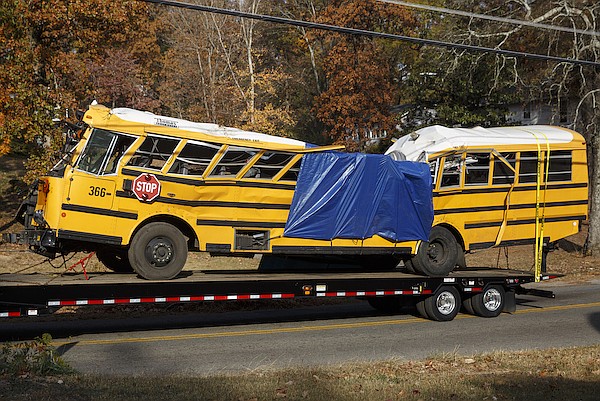
We hope a seat-belts-on-buses bill introduced Thursday by state Rep. JoAnne Favors, D-Chattanooga, gets a fair hearing in the Tennessee General Assembly over the next few months.
It deserves at least that.
Every legislator by now is aware of the Nov. 21, 2016, bus crash that killed six Woodmore Elementary School students. To a man or woman, they're likely also aware of the huge cost it would be to retrofit existing buses and equip new ones with the safety restraint systems.
Of course, no amount of money would make up for the loss of just one of those lives. But to say cost isn't a factor would be disingenuous.
Favors' bill, which will be carried in the upper chamber by state Sen. Todd Gardenhire, R-Chattanooga, requires safety restraint systems on any buses ordered or purchased by a public or private school beginning on July 1, 2018.
By July 1, 2023, seat belts would be required on all Tennessee school buses.
The fiscal note on the last seat-belts-on-buses bill introduced in the legislature was $5.53 million per year for the state, or $49.77 million through fiscal 2024-2025. Local districts would have to pay $33.18 million a year, or $265.48 million for its first eight years, according to a Fiscal Review Committee analysis.
For many years, the National Highway Traffic Safety Administration (NHTSA) and school bus manufacturers contended existing school bus safety measures provided enough injury protection for children and that the installation of seat belts would not create enough additional benefits to make the cost worthwhile.
Additional evidence is available that because large buses are heavier and distribute crash forces differently, they are safer - seven times safer, according to the NHTSA - than passenger cars or light trucks. Further, there are questions about whether seat belts will be used and what, if any, responsibility the driver may have in buckling the belts for younger children.
But over the last few years, the NHTSA position has shifted, and while the organization is not proposing federal rules for the installation of safety restraints, an agency spokesman said, "How can we not want every child who rides a school bus to have the total safety afforded by three-point belts?"
The National Transportation Safety Board, the American Academy of Pediatric and the National Safety Council are on board, too, though none of them have to pay for the belts.
Currently, six states require seat belts; 17 others are studying the issue.
Gov. Bill Haslam's school bus safety bill also was introduced last week. It doesn't deal with seat belts but raises the minimum age for school bus drivers from 21 to 25, adds new requirements for drivers, contractors and school systems, and mandates enhanced training and communication about driver incidents.
Nobody wants one more child to die in a bus crash, but the cost of safety restraint systems is a real and not an imagined factor. Since buses are replaced every so often, it's not a onetime cost, either.
The two previous seat-belts-on-buses bills went nowhere. We believe this one deserves legislators' attention.
